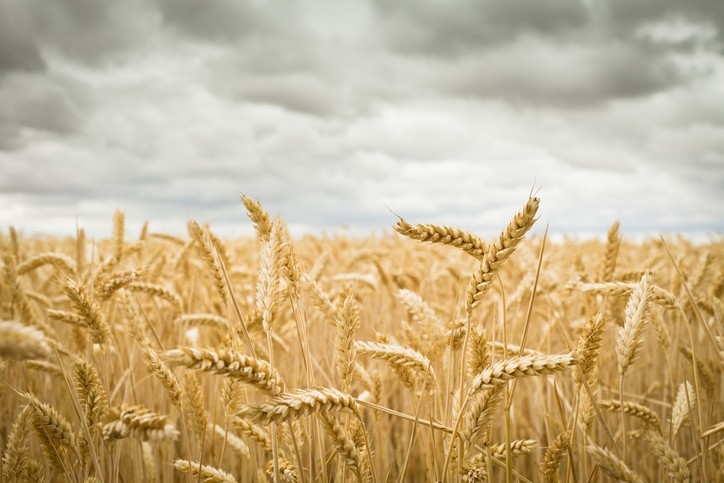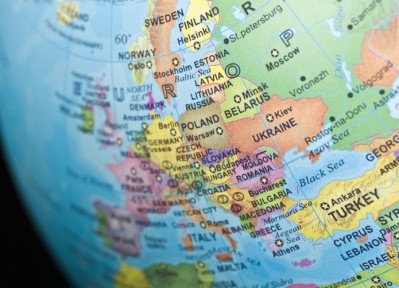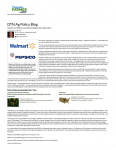Dovetailing Russian invasion & US drought could threaten wheat supplies, raise prices

Accounting for 29% of the world’s wheat supply, 19% of global corn, 23% of rapeseed or canola and 78% of the world’s sunflower oil, Russia and Ukraine are heavy-hitters in the global grain and seed commodities markets, prices for which were already “in a rally” and “moving much higher” before Russia invaded Ukraine, said Stephen Nicholson, global grain and oilseed strategist Stephen Nicholson.
He explained that even though most of the grains Russia and Ukraine export go to Asia and Europe, buyers in those regions will need to source from other suppliers if the current conflict is drawn out or negatively impacts the ability of farmers in the region to plant and harvest next year’s crops.
Indeed, several international food and beverage companies already have suspended operations in Ukraine, including ingredient suppliers ADM and Bunge, which depending on how long the conflict stretches may need to rethink their business strategies and sourcing.
“The question is, do those companies go back to that region? Are they willing to kind of put up with issues of doing business, which has become extremely difficult? Buyers around the world will also have to think if they want to put their supply chain in danger,” especially considering there are already shipping issues and insurance and freight costs are rising “tremendously,” Nicholson said.
Impacted players have a little time to figure out their game plan given that Russia and Ukraine have already shipped quite a bit of their wheat, corn and barley for the year and typically hold back very little in reserve. In 2021, they had just about 4.5% of world stocks, while the US had almost 8%, Nicholson said.
The short-term threat may be muted slightly, the mid- and longer-range threat is significant because if Russia and Ukraine are not able to produce at historic levels in the coming year due to the war, there are not enough stocks or supply from other global players to make up the difference, Nicholson added.
This is especially true for wheat, which explains why the grain’s prices moved so quickly following the invasion.
Drought threatens US supplies
The US is a logical choice for buyers to turn to, however, it had its own problems this year – notably a drought that is compromising the quality and quantity of wheat supplies. Much of the Midwest and Plains are in a drought, as are the West and Northwest regions. Predictions of a warmer than average spring due to La Nina also means little relief is likely.
Supplies of Hard Red Spring, Durum and White wheat all are “severely reduced” so that exports of White wheat are predicted to be the lowest in more than a decade and those of Hard Red Spring the lowest in more than 30 years, according the US Agriculture Department.
Prices likely will fall back, but to higher base levels
Higher prices related to the drought already pushed some Asian buyers to look elsewhere, but Russia’s invasion of Ukraine could drive them back – adding pressure on other US buyers to “bar the door” and take precautions to secure their own futures, Nicholson said.
However, if prices go much higher than where they are today, some buyers may “start to make decisions differently,” and potentially look for ways to go without as much wheat or grains as they have used in the past, Nicholson said.
He compared this scenario to one already playing out in the energy market: “We’ve started to see this anecdotally in the energy market where people who were planning car trips are saying, ‘We’re not going to take that trip because of high gas prices.’ The same thing will happen in the commodity side and the demand side with start to contract a little bit as the prices go higher.”
The likelihood of this scenario, though, is still hard to predict because so many variables are still in play, Nicholson said.
Given this uncertainty, he suggested that buyers think about prices for grains and seed during the war the same way they would during a drought.
“It’s different than a drought because we don’t know the span, but think about a drought market and how it spikes and then it sets back as it gets used to what’s going on,” he said. “This is a bit like that. We’re seeing a huge spike, and we will see a set back, but likely see a set back that is at a higher level that we might have done if this conflict hadn’t happened.”






















